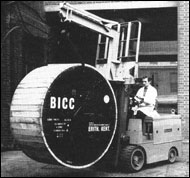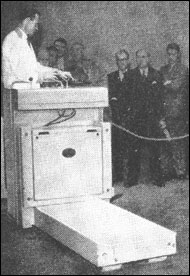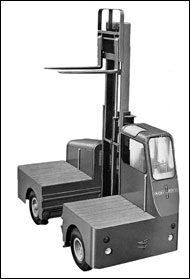 British car production during 1958 was reported to have exceeded one million units, for the first time in the history of British industry. This was attained during a year when the majority of industry suffered from trade difficulties and reduced activity, especially in steel, coal and textiles. Even so, some firms in these sectors still managed to maintain and even increase their business volumes during this time. It is not surprising therefore that industry forecasts for 1959 were a little mixed.
British car production during 1958 was reported to have exceeded one million units, for the first time in the history of British industry. This was attained during a year when the majority of industry suffered from trade difficulties and reduced activity, especially in steel, coal and textiles. Even so, some firms in these sectors still managed to maintain and even increase their business volumes during this time. It is not surprising therefore that industry forecasts for 1959 were a little mixed.
For those firms with more optimistic views, the route to success was seen as one of trying to keep running expenses down in the face of increasing material and wage costs. Most of these firms were the companies that had invested in plant and equipment modernisation in recent years. One important gain in this process was that they improved their materials handling facilities and so enjoyed more efficient handling costs.
 Some leading British companies that would have been at the centre in supplying equipment and advice were Ransomes Sims and Jefferies, ITD and Lansing Bagnall.
Some leading British companies that would have been at the centre in supplying equipment and advice were Ransomes Sims and Jefferies, ITD and Lansing Bagnall.
Of these Lansing Bagnall had a success story of its own, and during February 1959 won a large export order to Pakistan. The first part was for eight 3-ton capacity model SOES stillage trucks consigned to the port of Chittagong in East Pakistan. It was understood that this area of the country was to undergo extensive developments, in which mechanised materials handling methods would be introduced on a large scale.
Later in the year ITD extended their range of British built battery powered equipment with the model 624E in the Stacatruc series. Based on an all welded chassis, this 3-ton machine was designed to work in rough conditions and could be fitted with solid, cushion or pneumatic tyres. The hydraulic pump and motor were mounted in the left hand side panel of the truck, looking from the rear, with the contactors and resistances in the right hand side. Both assemblies were on swing down panels for easy access. Electromagnetic contactors were supplied by John Morris & Co Ltd, and the speed step delays between these were supplied from a foot controller with an air dashpot.
To obtain the best stability factor for this heavyweight model, the rear axle assembly was of a similar design to the successful 3-ton diesel model launched in 1958. The familiar suspension system of semi-elliptic springs and swivelling trunnions normally used on their battery powered trucks was discarded in favour of the cruciform axle.
 In November 1959 Hyster Ltd. Glasgow and Ransomes Simms and Jefferies Ltd issued a joint statement on marketing. The arrangement provided for Ransomes to be the sole manufacturers of electric trucks and Hyster to be sole manufacturers of internal combustion engined trucks. All trucks would be for marketing exclusively by Hyster Ltd and be badged as Hyster/Ransome. Both companies agreed to collaborate in design and engineering to the fullest extent. It was stressed that there was no financial link up between the two companies.
In November 1959 Hyster Ltd. Glasgow and Ransomes Simms and Jefferies Ltd issued a joint statement on marketing. The arrangement provided for Ransomes to be the sole manufacturers of electric trucks and Hyster to be sole manufacturers of internal combustion engined trucks. All trucks would be for marketing exclusively by Hyster Ltd and be badged as Hyster/Ransome. Both companies agreed to collaborate in design and engineering to the fullest extent. It was stressed that there was no financial link up between the two companies.
Lancer Sideloader announced another British success, after members of the technical press gave their new machine its first examination. This 6-ton model with a high speed 50 hp diesel engine was first unveiled at the sixth Mechanical Handling Exhibition at Earls Court in June 1958. The engine and transmission were of standard Fordson manufacture, giving easy access to spare parts and maintenance. A timber company in Millwall, London was the first business to acquire these machines, and the directors were reported to have claimed that it had enabled them to increase production in excess of 25 percent.
By James Brindley, Director, National Fork Truck Heritage Centre
To be continued




1 Comment
boo i like your website